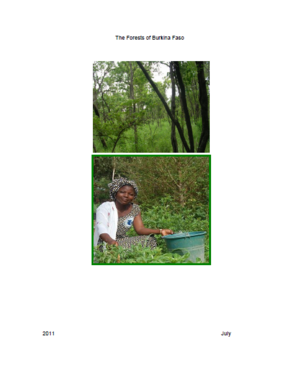The Forests of Burkina Faso
Locally controlled forests involve one billion people and one quarter of the world‘s forests, providing $75 - $100 billion per year in goods and services and a broad range of other economic, environmental, social, cultural and spiritual benefits. Rights-holder organizations such as the Global Alliance of Community Forestry (GACF), the International Family Forest Alliance (IFFA) and the International Alliance of Indigenous and Tribal Peoples of Tropical Forests (IAITPTF), known collectively as the G3, define locally controlled forestry as follows:
“The local right for forest owner families and communities to make decisions on commercial forest management and land use, with secure tenure rights, freedom of association and access to markets and technology”. (Elson, 2011)
Exactly what Investing in Locally Controlled Forestry (ILCF) means in practice has been the subject of six dialogues hosted by The Forest Dialogue (TFD) and co-chaired by investors and G3 members under TFD‘s ILCF Initiaitve.
Previous dialogues in Panama, Nepal and Macedonia concluded that the three major themes that should be explored in the subsequent dialogues are: partnerships, markets, and government‘s role. Further, these dialogues recognized that Locally Controlled Forestry involves three groups of rights holders, namely: indigenous peoples, community forestry groups, and forestland smallholders—who own or manage a significant part of the world‘s forest resources.

